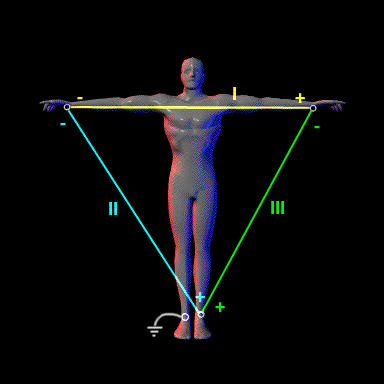
Leads I, II, and III are bipolar leads, each with a positive and negative pole. In lead I, the right arm is the negative pole and the left arm the positive pole. In lead II, the right arm is negative and the left leg is positive. In lead III, the left arm is negative and the left leg is positive. These leads were developed by Willem Einthoven to represent an equilateral triangle with the heart assumed to be a symmetrical sphere located in the center of the triangle. As previously note, a fourth limb electrode is placed on the right leg and connected to ground. However, this ground electrode could actually be placed anywhere on the body. Its placement on the right leg is one of convenience and tradition.
